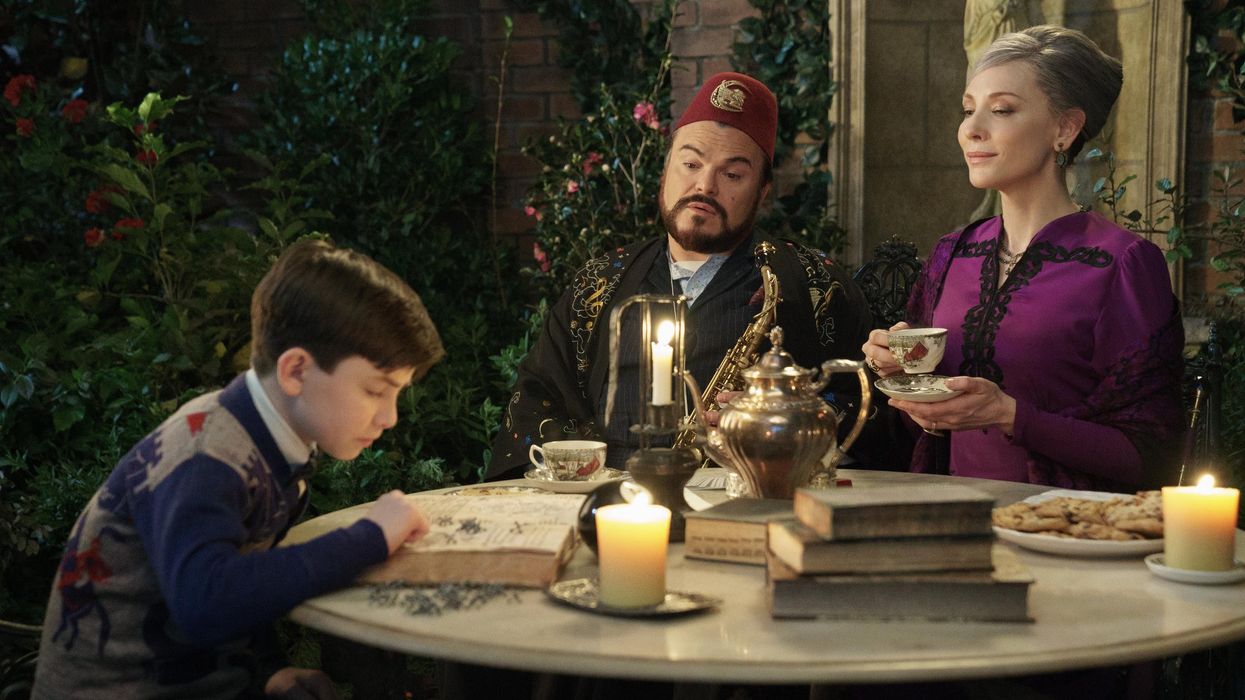Watch: Go BTS on Eli Roth's Spooky 'The House with a Clock in Its Walls'
Universal Studios presents an early Halloween fright flick for the family.

There are few predicaments that sound more stress-inducing than living in a house with a clock in its walls (and you thought the sounds of the beating Tell-Tale Heart were loud) and quite a boisterous one it is in Eli Roth's film adaptation of John Bellairs's 1973 novel, The House with a Clock in Its Walls.
A children's horror fantasy that focuses on a young boy (Owen Vaccaro) who, after his parents pass away, moves in with his warlock Uncle (Jack Black) of whom the titular house is occupied by, the film is both appropriate for children and creepy enough for adults. Make no mistake: while the film is light on gross-out gore, there are a few jump scares—that devil-faced cuckoo clock!— and nasty hand-slicings and horrific, palm-licking demons to keep adults happy. Director Roth, known for his stomach-churning torture porn escapades, pulls back a bit on the brutality here while maintaining a welcomed sense of eerie unease.
The film doesn't shy away from the narrative's heavier thematic material either. As aforementioned, the child's parents are dead and, communicating with them by asking questions to a Magic 8-ball, the boy is, let's just say fooled, into thinking that dear old mom has returned from the grave to comfort him and provide parental advice. When the truth is revealed, you feel a child-like sense of betrayal, and that's intentional. The fact that his uncle's friendly confidant (played by Cate Blanchett) also suffered a family tragedy before the film begins, helps deepen the stakes in play.
The film is heavy on special effects—how else could you create a winged-lion, created from grass sculpturing, that defecates dead leaves?
Taking place in the 1950s, The House with a Clock in Its Walls is a period piece (a faded old-school Univeral Studios logo opens the film) with production design which reflects that appropriately. Where it really succeeds in setting itself in the "Baby Boom" generation, however, is in the storytelling.
References to Ovaltine shakes at the local soda shop are made, school elections are cutthroat (one candidate promises soda pop dispensed throughout the school's water fountains), and our bloodshot-eyed villain (Kyle MacLachlan) has grown evil in part due to PTSD he suffered while fighting in the second World War. This Eisenhower generation has birthed a generation of individuals attempting to equally suppress and embrace their weirdness.
The film is heavy on special effects—how else could you create a winged-lion, created from grass sculpturing, that defecates dead leaves?—and its varying degrees of authenticity contributes to the skeptical artifice of magic; in one sequence, it also brings a literalization to the term "smashing pumpkins." Kudos for a sequence in which a basement of creepy toys come to life, each appearing more sinister than the last.
Household objects, such as a recliner, are given animalistic traits to soften up their frightening appearance and, when it really counts, Roth is allowed to go brutal in his depiction of a shape-shifting female baddie near film's end. Other times the film takes a "blender" approach, stirring a combination of special and practical effects to make our zombie antagonist look frighteningly decrepit.
As the film is currently playing in theaters, we're sharing a behind-the-scenes video below of the film's production. The clips are brief, so no worries of there being any major spoilers.
Have you seen The House with a Clock in Its Walls? What did you think? Let us know in the comments below.











